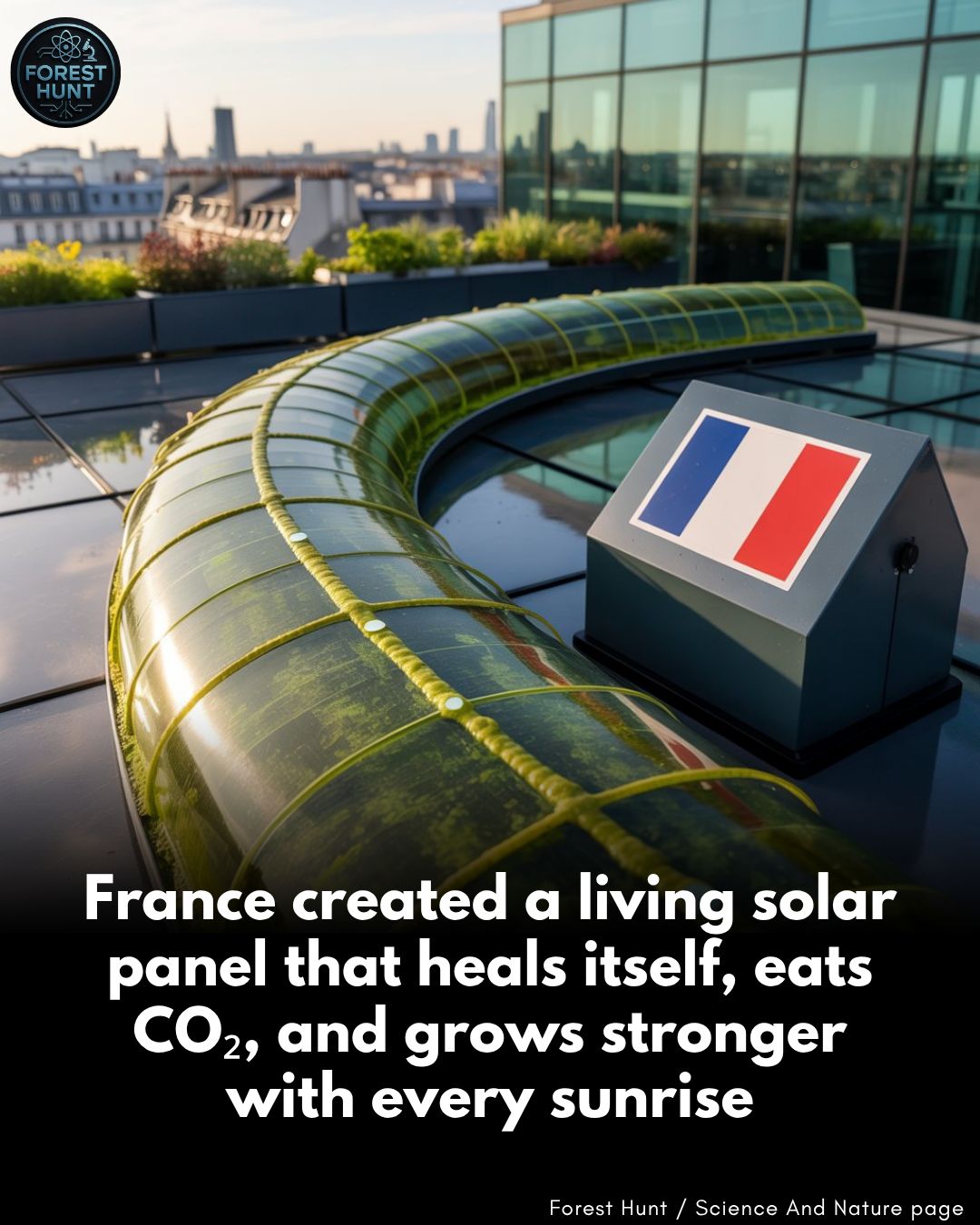Scientists in France have engineered a solar material that mimics biological skin — it grows under sunlight, heals cuts, and even absorbs CO₂ as it works. Built using algae-based biofilms and stretchable electronics, the panel turns sunlight into electricity and biomass simultaneously, turning solar energy into both power and photosynthesis.
At its core are engineered cyanobacteria — modified to overproduce photosynthetic pigments and power a conductive gel. As the sun hits the panel, the microbes not only generate electricity but grow additional surface area over time, making the panel “thicker” and more efficient with age.
If damaged, the living layer can regenerate missing sections in days, sealing cuts and restoring conductivity naturally — no technician required. This self-healing makes the tech ideal for hard-to-reach locations like rooftops, vehicles, or disaster zones.
The biofilm also passively captures CO₂ from the air and stores it as sugar chains — reducing atmospheric carbon while generating clean energy. One square meter removes over 3 kg of CO₂ per year — a bonus most solar panels can’t touch.
France’s green tech labs envision buildings wrapped in living panels that grow as the structure ages, changing color slightly with seasons. The algae can even be engineered to shift pigment in response to pollution or sunlight strength — turning architecture into a living environmental monitor.
Pilot panels are already powering low-energy lamps and sensors in Paris rooftops. The next step? Scaled-up versions that could one day replace plastic PV cells altogether with living, compostable



